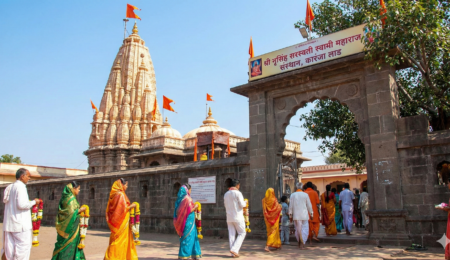India’s Tiniest Giant: The Mighty Little Arvari River
India’s Tiniest Titan: Meet the Arvari – Shortest river in India
Forget the vast Ganga or mighty Brahmaputra for a moment. In the sunbaked hills of Rajasthan’s Alwar district, a humble contender holds a unique title: India’s shortest perennial river. Flowing just 45 kilometers (28 miles), the Arvari River ( shortest river in India ) is a testament to nature’s resilience and the power of human determination. While whispers exist of shorter stretches like Kerala’s Tambaraparni (flowing 11 km within Kerala) or Uttarakhand’s Diphu tributary (~7.5 km), the Arvari stands apart. It boasts a complete, independent basin within India (Rajasthan), sustains life year-round, and carries a story so profound it overshadows its modest length.
Death and Rebirth: The Arvari’s Unlikely Saga of Shortest river in India
By the mid-20th century, the Arvari was declared dead. Decades of relentless deforestation, overgrazing, and unsustainable farming in its catchment area had stripped the land bare. Monsoon rains vanished quickly, groundwater plummeted, and the riverbed became a desolate, sandy scar. Villages faced crippling droughts, forcing mass migration. Hope seemed lost.
Then came the water warriors.
In the 1980s, a quiet revolution began. Tarun Bharat Sangh (TBS), an NGO led by the visionary Rajendra Singh (later known as the “Waterman of India”), partnered with desperate local communities. Their weapon? Ancient wisdom.
- The Johad Revolution: Villagers built thousands of johads – traditional, crescent-shaped earthen rainwater harvesting dams. These simple structures slowed down monsoon runoff, allowing water to percolate into the ground instead of washing away precious topsoil.
- Forests Returned: Massive afforestation drives followed. Trees anchored the soil, reduced evaporation, and created moisture-trapping microclimates.
- Community as Custodians: This wasn’t an external project; it was owned by the villagers. Every family contributed labor (shramdaan) to build and maintain the structures.
The Miracle Unfolds: Slowly, steadily, the water table began to rise. By the mid-1990s, the impossible happened – the Arvari River started flowing again! Parched lands turned green, agriculture flourished, wildlife returned, and villages came back to life. It became a global beacon of community-led ecological restoration.
More Than Just 45 Km: Why the Arvari is a Giant
Its length is short, but its impact is monumental:
- A Beacon of Hope: The Arvari proves that even the most devastated ecosystems can be healed. It offers a replicable model for water conservation in arid regions worldwide.
- The Power of Community: The most radical innovation wasn’t the johads, but the Arvari River Parliament (Arvari Sansad). Formed in 1998 by representatives from 72 riverside villages, this grassroots body governs the river. They collectively decide on water use, ban destructive practices (like fishing during breeding season or tube wells near the river), and resolve disputes. It’s democracy in its purest, most ecological form.
- Lifeblood of Alwar: For villages like Bhaonta-Kolyala, the Arvari isn’t a geographical feature – it’s their lifeline. It provides drinking water, irrigates crops, sustains livestock, and supports biodiversity.
- Ecological Hotspot: The revival transformed the basin into a thriving ecosystem. Native trees, grasses, fish, birds, and mammals like leopards and antelopes returned, creating a vital green corridor in Rajasthan’s arid landscape.
Visiting the Arvari: Witnessing a Miracle
Experiencing the Arvari isn’t about dramatic white water or vast deltas. It’s about witnessing a triumph of spirit:
- Location: Head to the Alwar district of Rajasthan, specifically villages around Thanagazi and Bhaonta-Kolyala.
- What to See:
- Walk along the gentle, flowing stream – a marvel considering its recent history.
- Observe the network of johads dotting the landscape – the humble heroes of the revival.
- Visit the Arvari River Parliament meeting site (if possible, coordinate with TBS) and feel the power of community governance.
- Talk to the villagers – hear their stories of struggle and resurgence firsthand.
- Experience: This is prime eco-tourism and sustainable travel. Feel the profound connection between people, water, and land.
(Tip: Combine your visit with the nearby Sariska Tiger Reserve or Alwar Fort for a richer Rajasthan experience.)
The Ripple Effect: Lessons from the Little River
The Arvari’s story transcends geography:
- Every Drop Matters: Efficient water harvesting and conscious use are non-negotiable, especially in vulnerable regions.
- Local Solutions, Global Relevance: The johad model has inspired watershed projects across India and internationally.
- Empower, Don’t Impose: Sustainable change thrives when communities lead and own the solutions.
- Nature’s Resilience: Given a chance, nature can recover spectacularly.
As Rajendra Singh powerfully stated:
“The Arvari is not just a river. It is the consciousness of the community. It proves that when people decide to save their resources, even a dying river can be reborn.”
Arvari: The Shortest River in India with the Longest Shadow
The Arvari River, India’s shortest river in india, is a geographical curiosity only on paper. In reality, it is a giant of inspiration. It stands as a defiant symbol against environmental degradation, a shining example of community empowerment, and a living testament that size is no measure of significance.
Its 45 kilometers carry the weight of a profound truth: When people and nature work in harmony, even the smallest current can carve a canyon of hope.
Plan Your Visit:
- Best Time: October to March (Pleasant weather)
- Nearest Major Town: Alwar, Rajasthan (Well-connected by road and rail from Delhi/Jaipur)
- Guided Tours: Contact Tarun Bharat Sangh (TBS) for responsible community-based tourism options.




Leave a Comment